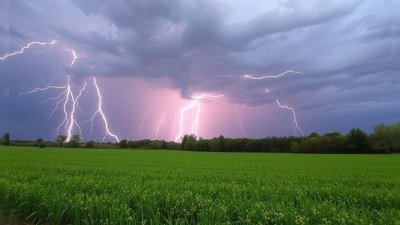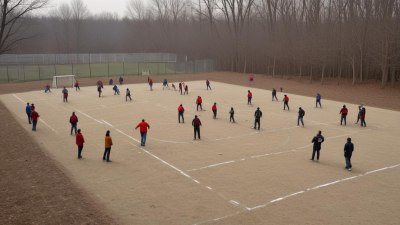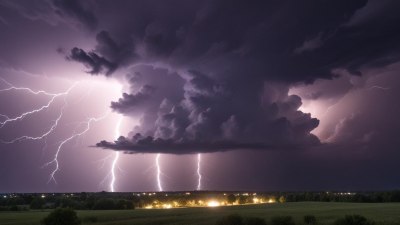The Real MVP of Outdoor Sports? Cloud Cover
Discover how cloud cover impacts outdoor sports, from performance to strategy.

Image by alexeyzhilkin on Freepik
When it comes to outdoor sports, athletes often focus on visible elements such as equipment, training, and nutrition. However, some crucial factors that can significantly influence performance often go unnoticed. One such factor is cloud cover. The presence or absence of clouds can alter temperature, light levels, and even the psychological state of athletes. Understanding these nuances can be the key to unlocking peak performance.
Cloud cover plays an essential role in regulating temperature. For instance, on a hot summer day, clouds can act as a blanket, preventing the sun's harsh rays from directly hitting athletes. This results in a cooler playing environment, which can be a game-changer in endurance sports such as running, cycling, and triathlons. When temperatures soar, the body's ability to regulate temperature becomes compromised, leading to heat exhaustion and decreased performance. Cloudy conditions provide shade that keeps athletes cooler and allows them to maintain optimal performance levels.
Consider the sport of running. Studies have shown that runners tend to perform better in overcast conditions where cloud cover minimizes the effects of sun exposure. The shade provided by clouds can prolong the time before athletes experience overheating, allowing for longer and more intense training sessions. When planning long-distance runs, athletes often check weather forecasts specifically for cloud coverage, as it can determine their training outcomes.
In cycling, cloud cover can also influence race strategies. Cyclists often have to deal with varying temperatures throughout a race. If they start in sunny conditions, they may need to adjust their hydration strategies to cope with the heat. However, if clouds roll in, the temperature can drop significantly, making it essential for racers to adapt their plans quickly. Teams that anticipate weather changes and implement strategies accordingly often have an edge over their competitors.
The Psychological Boost of Cloud Cover
Beyond physical performance, cloud cover can also provide psychological advantages. Bright, sunny days can sometimes lead to a feeling of aggression or restlessness, particularly in sports that require focus, such as archery or shooting. This is because glare can impact vision and concentration. In contrast, a cloudy day often brings a sense of calmness. Many athletes report feeling more focused and centered during competitions when cloud cover is present.
The psychological effect of ambient light on mood and performance is well-documented. Sunlight increases levels of serotonin, which can boost mood. However, too much sun can lead to fatigue, irritability, and distraction as one battles the heat. A moderately cloudy day can strike the right balance, offering favorable lighting that allows athletes to concentrate on their performance without the distractions that clear, unfiltered sunlight can bring.
Sports like golf are also significantly affected by cloud cover. On sunny days, players may find themselves distracted by the sun's glare on the greens, which can impact their putting game. On the other hand, overcast conditions lead to more consistent lighting for golfers, allowing them to judge distances better and execute their shots more accurately. Some golfers even prefer cloudy days for playing, praising their ability to focus more on technique and less on external distractions.
The Impact on Team Sports
In team sports, cloud cover gives players a more comfortable environment. During a football match, the combination of exertion and hot weather can lead to dehydration and muscle cramps. Cloud cover alleviates some of the strain on the athletes’ bodies, which can lead to an overall improvement in team performance. Teams that are better conditioned to handle varying weather conditions can turn the tide in their favor during crucial moments of a game.
Moreover, cloud cover can affect spectator experiences in outdoor sports. Crowds tend to turn out in larger numbers when it’s cloudy compared to hotter, sunnier days. This can lead to more vibrant atmospheres, enhancing the experience for athletes and fans alike. The collective energy of a cheering crowd can boost players' performance, making cloud cover not just a factor for those competing, but also for those supporting them.
Training Choices Based on Weather
Athletes often tailor their training regimens based on weather predictions. Cloud cover can serve as an ideal opportunity to push limits. When the weather is predicted to be cloudy, athletes might plan grueling workouts, knowing that the conditions will provide an optimal environment for performance. This could include high-intensity interval training (HIIT) sessions, longer runs, or cycling sprints where endurance and performance are paramount.
Cloud cover can also play a role in strategizing training sessions for future competitions. Coaches often analyze weather patterns, using data to help map out training schedules. They may plan races or simulate competition-like settings based on the likelihood of cloud cover to best prepare athletes for upcoming events. This level of preparation can make a significant difference at competitions where results can hinge on mere seconds.
Cloud Cover in Winter Sports
While much of this discussion has focused on summer sports, cloud cover equally affects winter sports. In skiing or snowboarding, cloudy days can actually enhance visibility in certain situations, making it easier to navigate the terrain. The contrast of snow against dark clouds offers better perception of shifts in elevation, crevices, and potential hazards.
A thick cloud cover can also insulate the snow, affecting its texture and quality. Some athletes prefer skiing on overcast days because it opens up opportunities for more challenging runs, ultimately enhancing their skills. For freestyle skiers and snowboarders, cloudy conditions reduce glare, allowing for better vision when executing tricks and jumps.
Adaptation and Recovery
Cloud cover is equally beneficial during the recovery phase for athletes. After an intense competition or rigorous training session, a cloudy day may best facilitate recovery. Cooler temperatures and humid conditions can relax muscles more than hot, dry environments. Recovery strategies like ice baths or cool-down sessions can perform better when athletes are not battling the oppressive heat from blazing sunlight.
The presence of cloud cover can alleviate discomfort and offer an inviting atmosphere for physical recovery. Furthermore, the typical behaviors associated with cloudy weather—staying indoors, focusing on nutrition, and engaging in light stretches—serve to enhance post-performance recovery. This understanding allows athletes to develop a holistic approach to enhance their care routine.
In conclusion, cloud cover may not be the first factor that comes to mind when considering what affects outdoor sports, but its significance cannot be overstated. From performance and safety to psychological influences and recovery, the role of clouds extends far beyond their aesthetic appeal. The next time you watch a sporting event or step onto the field, keep in mind that while athletes train relentlessly, sometimes nature holds the ultimate key to unlocking their potential.











